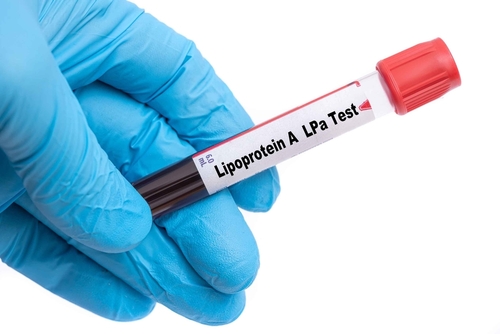
Many things in life are personalized and tailored to the individual. The power of new and emerging technology makes this possible. When placing an order for food, you select exactly what you want and what you don’t. If you miss your favorite television show, you can record it or catch it on demand when it’s convenient for you. Clothing that doesn’t fit right off the rack can be altered for your body specifically. Life is not a one size fits all experience. With everything else in life catered to fit the needs of an individual, it only makes sense that health care would also follow suit.
What is Precision Medicine?
Precision medicine, sometimes referred to as personalized medicine, encompasses this very idea. It eliminates the “one size fits all” approach to medicine and strives to give patients exactly what they need. According to the Precision Medicine Initiative (more on that in a bit), precision medicine is “an emerging approach for disease treatment and prevention that takes into account individual variability in genes, environment, and lifestyle for each person.”
The National Institutes of Health (NIH) goes on to explain, “This approach will allow doctors and researchers to predict more accurately which treatment and prevention strategies for a particular disease will work in which groups of people. It is in contrast to a one-size-fits-all approach, in which disease treatment and prevention strategies are developed for the average person, with less consideration for the differences between individuals.”
Former President Barack Obama launched the Precision Medicine Initiative in 2015. According to an archived page from President Obama’s White House website, the mission statement of the Precision Medicine Initiative is: “To enable a new era of medicine through research, technology, and policies that empower patients, researchers, and providers to work together toward development of individualized care.”
Putting a term to the concept came along recently, but the mechanism behind precision medicine has been in practice for a long time. The NIH notes that something as common as a blood transfusion is a form of precision medicine. When you receive blood, it’s not at random; you’re matched to a sample that matches your blood type.
Precision medicine considers more than genetics and also takes into account how environmental factors affect your health. The University of Utah Genetic Science Learning Center (GSLC) explains, “Factors from the environment—including our physical surroundings, our diet, and our lifestyle—also influence our health. For example, even if someone inherits genetic variations that make them susceptible to skin cancer, they can decrease their chances of getting cancer by protecting themselves from the sun. Precision medicine involves understanding how factors from the environment interact with genetic variations to influence health. When combined with information about a person’s environment, genetic information becomes even more powerful.”
And it’s about more than just treatments—factors such as prevention and screening are also important, the GSLC notes. Here are other ways you may see precision medicine at play:
- Identifying patients at high risk for certain diseases before the condition manifests
- Evaluation tools to determine which treatment(s) the patient will be most likely to respond to
- Screening strategies to spot early signs of disease before they become symptomatic
- Diagnostic tools to identify disease subtypes that require different treatment methods
- Tests for potential parents to determine whether they are carriers for certain genetic diseases
- Devices for disease management and recovery
The Centers for Disease Control and Prevention (CDC) describes two layers of precision medicine: prediction and prevention, and treatment and management.
Let’s break those down in-depth.
Prediction and Prevention
Genetics play a significant role in prediction and prevention. Certain diseases are hereditary or pose a greater risk in patients with a family history of the condition. Examples of diseases that run in families include:
-
Heart disease
- Coronary artery disease (CAD) affects an estimated 13 million Americans. Genes, lifestyle choices, and environment all play a role in CAD.
- High blood pressure affects about one in three Americans. Patients with high blood pressure in their family have a greater chance of developing it at a younger age. Age and being overweight are also risk factors.
-
Asthma
- Environmental factors trigger asthma attacks (dust, mold, pollen, and stress, to name a few), but whether or not a person will develop asthma in the first place is influenced by genetic factors. Having a direct family member with asthma increases the risk.
-
Diabetes
- Overweight and gestational diabetes are both risk factors of diabetes; people with a diabetic sibling or parent are also much more likely to develop the disease.
-
Certain cancers
- Women with blood relatives who had breast cancer are significantly more likely to develop the disease. It’s important to be aware of family history on both sides of the family: maternal and paternal.
- Similarly, men with close relatives who have or had prostate cancer are more likely to develop the disease.
It’s important to know your family history with diseases such as these and to discuss your family history with your doctor. It’s possible that your doctor will recommend genetic counseling or testing. In some cases, people with high risk for developing a certain disease are recommended to undergo additional screening measures. For instance, patients with a close relative who was diagnosed with breast cancer at a young age may want to start annual screening at an earlier age than the general population.
Smart Devices
Personal smart devices are also helpful. Different smart applications allow you to record data including nutrition, exercise, heart rate, blood pressure, medications and more. While these are not meant to replace the care and/or advice of a doctor, these applications can be beneficial supplements to regularly scheduled check-ups. The CDC shares this example:
“Joe, an active 49 year old man with no history of heart problems, got an alert on his smartphone that he had atrial fibrillation. He went to a nearby urgent care center, where doctors confirmed that he had the condition. Left untreated, atrial fibrillation can lead to stroke. By finding out about his atrial fibrillation early, Joe could take steps to treat it before he had any serious health problems.”
Similarly, social media can also be an unexpected, helpful tool. For instance, a post describing different aspects of the flu—including prevention tips, signs to look out for, and who has the greatest risk for complications—may encourage someone who reads the post to go get a flu shot.
Genomic Testing
Genome sequencing can help prevent further spreading of an infectious illness by identifying the bacteria responsible for an illness. By knowing what germ is causing the illness, doctors can determine the best course of action for treatment. The CDC provides this scenario:
“After eating at a restaurant, you and your friend have symptoms of food poisoning. You are seen by your doctor, who orders tests of your stool. When Salmonella bacteria are identified in your stool, your doctor alerts the health department. The health department then performs genetic testing on the Salmonella bacteria from your stool sample and determines that they are from a strain that matches that of several other confirmed cases in your area, all of whom reported eating papayas. Using this information, public health workers then find the source is a certain brand of papayas and remove them from grocery stores and restaurants, thereby preventing additional cases.”
To address certain conditions as early as possible, newborn screening is recommended. Newborn screening includes a blood test as well as checks for hearing loss and heart defects. Identifying potentially life-threatening conditions early on could possibly save a baby’s life.
Some people may be at high risk of developing a disease but show no outward signs of it themselves, and their family members may not show any signs, either. Gene mutations that are invisible to the naked eye put you at increased odds of developing certain conditions; for instance, the BRCA1 and BRCA2 gene mutations put patients at an increased risk of cancer. If you know you have a mutation or condition that increases your chance for a certain disease, it’s important to take preventative measures to minimize this risk, such as earlier or more frequent screenings.
Are You a High-risk Patient? Here’s What You Can Do
Patients who are more likely to develop certain conditions may consider taking preventative measures to reduce this risk. Different techniques are recommended for different diseases.
Heart disease: If your family has a history of…
- CAD: maintain a healthy diet, engage in regular exercise, manage your weight, take any prescribed medications (i.e., diabetes, blood pressure, etc.), and consider quitting smoking if you’re a smoker
- High blood pressure: follow the same tips as above, and also lower your salt intake, manage your stress, limit your alcohol consumption, and undergo regular blood pressure screenings
Asthma: asthma is often hereditary and cannot be prevented but can be managed if you avoid known triggers and use your medication appropriately
Diabetes: follow a healthy diet that includes plenty of fruits and vegetables and lowers sugar, exercise regularly, and maintain a healthy weight
Cancer: If your family has a history of…
- Breast cancer: do monthly breast self-exams, receive mammograms every year after age 40, consult with your doctor about genetic testing, maintain a healthy diet, partake in regular exercise, and limit your alcohol consumption
- Prostate cancer: follow a healthy diet, engage in regular exercise, and undergo prostate examinations after age 50
Treatment and Management
Precision medicine also takes into account patients who already have a disease or illness.
For patients with tumors, doctors may perform tumor profiling, or genetic testing of a tumor, in order to determine the best treatment strategy. Tumor profiling can also help predict the likelihood of a tumor returning. Women with recurrent breast cancer, for instance, may choose to undergo a more aggressive treatment to reduce the risk of it returning again.
Pharmacogenomics, similarly, can tell a doctor how a patient’s body may react to certain treatments by analyzing a patient’s DNA. The CDC shares the following scenario as an example:
“Alyssa has Tourette syndrome. Before prescribing the drug, pimozide, to treat her condition, Alyssa’s doctor orders genetic testing for the gene CYP2D6, which affects how her body breaks down pimozide. The genetic testing shows that Alyssa has a version of CYP2D6 that breaks down pimozide slowly. Thus, her doctor knows to treat Alyssa with a lower dose.”
Patients with diabetes use insulin to regulate their blood sugar levels. One way to make this more manageable is to use devices to monitor their insulin dosing. This could be particularly useful for patients who do not regularly check their blood sugar levels with a fingerstick device. A doctor may have the patient use an arm sensor to monitor and measure blood sugar levels and observe certain habits, like eating certain foods, that cause changes in blood sugar levels.
Mobile devices are useful for prediction and prevention, and they can also be helpful in managing existing conditions. You can use your personal smart devices to keep track of factors such as your diet, exercise and activity, sleep, heart rate, blood pressure, medications, and more. If a healthy diet is part of your management plan, you can even use smart applications to search for and save healthy recipes to include in your routine.
What Do We Want Out of Precision Medicine?
A recent article published in The Journal of Precision Medicine highlighted four goals of the practice, also called the Four Pillars of Expanding Precision Medicine:
-
Improve diagnostic accuracy
- After prevention, the next step in precision medicine is making an accurate diagnosis—without which the appropriate treatment cannot be determined or initiated. The report cites statistics that up to 5% of U.S. adults received inaccurate outpatient diagnoses—mistakes that led to 10% of patient deaths and constituted up to 17% of in-hospital adverse events.
- “Laboratory tests have become more sensitive and precise in the vast majority of clinical conditions. Standardization allows for additional consistency in their interpretation. On top of that, Pharmaceutical Systems Solutions and automation in the laboratory adds accuracy by removing operation and manual handling risks,” the report notes.
-
Reduce unwarranted variations
- Accuracy is crucial—but in order for widespread precision medicine implementation, it must also be
- Variations account for about a quarter of all hospital costs and constitute up to 65% of healthcare costs.
- The article states: “Building best-practice standards along the continuum of care is a prerequisite for consistent, evidence-based care. The key levers for reducing variations are adapting to patients’ individual needs and reducing the subjectivity of operators and physicians. Correspondingly, automation and assisted decision-making based on reproducible technology activate these levers to create consistent diagnostic results.
- A recent example of this in action occurred at Mercy Health in St. Louis, Mo., where total knee replacement (TKR) procedures were recently evaluated. Researchers observed that TKR patients with the shortest length of hospital stay had something in common: they received preoperative pregabalin. This discovery resulted in better patient outcomes—including reduced length of stay—as well as an estimated $1 million in savings each year.
-
Personalize when it matters
- Recent medical developments have allowed personalized medicine to be possible.
- Patients who require radiation can undergo high-quality imaging so their radiation treatment course can be tailored specifically to their anatomy and needs.
- Tumors can now undergo liquid biopsies, which uses blood samples rather than invasive traditional biopsy. Liquid biopsies, coupled with genomic analyses, provide physicians with the genomic makeup of circulating DNA or cancer cells, thereby allowing them to determine the best specific course of treatment on a patient-by-patient base.
- “The move to personalized treatment has begun. Deploying such personalized approaches at scale is a clear requirement for improving clinical and financial outcomes for patients and hospitals around the world,” according to the report.
-
Advance therapy outcomes
- Minimally invasive surgeries are performed today with image-guided therapies, allowing for the most accurate procedure possible, thereby reducing hospital length of stay and pain.
- The use of imaging to guide different treatments and procedures holds the key to a significant advancements in precision medicine.
- “New advances in medical technology and imaging modalities such as ultrasound, magnetic resonance, CT, endoscopic cameras, and robotic technology are rewriting the rules for precise procedures and improved patient outcomes. Today’s leading surgeons regularly rely on computed tomography and angiography systems for high-res images,” according to the report.
- Real-time imaging can already be found in a variety of medical specialties, including cardiology, orthopedics, and oncology.
Precision Medicine in Practice: Case Report
In addition to monitoring and managing genetic diseases, precision medicine can also be used to manage patients postoperatively. A 2017 case report published in the Journal of Medical Case Reports highlighted an example of precision medicine in practice.
The patient was a 54-year-old woman with uncontrolled severe calf pain after an accident who was labeled as a drug seeker. Although she received multiple opioid and non-opioid medications after receiving total knee arthroplasty, her pain was still poorly controlled. She underwent precision medicine testing to evaluate her pain sensitivity objectively in order to determine if designating her as a pill seeker was accurate and to create an appropriate treatment plan.
The patient’s Proove profiles showed that the patient’s pain sensitivity was moderately low, meaning that she was likely to underreport pain and may have lower medication needs. It was determined that her unresolved pain was likely the result of an unresolved condition following her knee arthroplasty. The profiles also suggested that she was at a low risk for opioid addiction. Given this collection of evidence, the researchers believed she was not a pill seeker and that this designation was incorrect.
“The next step was to determine which medications and which doses would result in the most favorable outcomes for our patient,” the authors explained. “To determine this, we used the results of the Proove Opioid Response, Proove Drug Metabolism, and Proove Non-Opioid Profiles to guide her treatment. We reduced her pain medications to a single opioid, Vicodin (acetaminophen and hydrocodone), which also eliminated the adverse side effects she experienced.”
Can Patients Take Precision Medicine Into Their Own Hands? What You Need to Know About At-home DNA Testing
In recent years, new technologies have put more of the power into the patient. At-home DNA testing kits like AncestryDNA and 23andMe provide a degree of genetic information right at a patient’s fingertips.
The American Medical Association (AMA) describes several types of direct-to-consumer (DTC) genetic tests:
- Carrier testing for diseases such as cystic fibrosis and hemochromatosis
- Pharmacogenomic testing
- Testing for predisposition to complex diseases such as hereditary cancers, cardiovascular disease and depression
- Whole exome or genome sequencing
- Testing to determine ancestry
DTC testing requires participants to provide a DNA sample—typically a cheek swab or saliva—via mail to the company. The results are posted to a website only accessible by the sender.
Interpreting the results is not black and white, the AMA explains. Positive results are not indicative of a positive diagnosis but may instead suggest an increased risk of developing a condition later. On the other hand, a negative result does not mean the disease isn’t there or that the patient doesn’t have a higher than normal risk of developing it later. Interpreting these results in the absence of a doctor or healthcare professional can be challenging. It’s also important to take other factors not indicated in the DTC tests into account, such as genetics, family history, environmental factors, and others.
The AMA poses three risks associated with DTC testing:
- Overstate the impact of particular findings, for which little or no evidence may be available, to support questionable recommendations such as those regarding nutritional choices.
- Not be set up with the appropriate sensitivity and specificity needed for population screening, which raises the potential for a high rate of false-positive results, and may not cover all risk factors for the condition.
- Avoid regulatory oversight, particularly when lacking health or medical claims.
“Because of these and other limitations, DTC results should not be used for diagnosis or treatment decisions, and should not be used as a substitute for a physician’s clinical experience and guidance,” the organization adds.
The Takeaway: Precision Medicine Is the Guided Future of Medicine
Many medical specialties are already using precision medicine, which has existed long before it had a specific title. Precision medicine spans the entire process, from genetics to prevention, diagnosis, treatment, and management. It’s important to remember that while certain information may be easily accessible—such as at-home DNA testing—it’s important to have discussions with physicians before making assumptions or decisions regarding disease prevention, diagnosis, and treatment.







 © 2025 Mashup Media, LLC, a Formedics Property. All Rights Reserved.
© 2025 Mashup Media, LLC, a Formedics Property. All Rights Reserved.